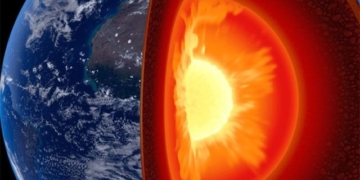A Japanese research team has successfully developed fertilized mouse eggs into blastocysts – the first stage of the cell differentiation process – aboard the International Space Station (ISS).
The mouse embryo research team in space includes researchers from Yamanashi University, the Japan Aerospace Exploration Agency (JAXA), and the government-backed RIKEN Institute. The results were published online on October 28 in the American scientific journal iScience.

Mouse embryo under a microscope after being returned from the International Space Station – (Photo: Yamanashi University).
This research comes amid growing concerns about the effects of gravity on reproductive capabilities as humanity ventures into space.
Mr. Teruhiko Wakayama from Yamanashi University, the lead researcher, stated: “There is a possibility that astronauts will become pregnant during future missions to Mars, as it will take more than six months to travel there. We are conducting research to ensure that humans can safely have children if that time comes.”
Wakayama and his colleagues took the initial steps in their laboratory on Earth. The research team obtained 720 mouse embryos at the two-cell stage from pregnant mice and froze them.
The frozen embryos were sent to the ISS aboard a SpaceX rocket launched from Florida (USA) in August 2021.
The mouse embryos were stored inside special devices designed by Wakayama’s team, allowing astronauts on the station to easily thaw and culture the embryos.
Astronaut Akihiko Hoshide, who was on a long-term mission aboard the ISS at the time, thawed and cultured the embryos.
Dr. Wakayama noted that the mouse embryos were developed for four days, as they can only survive for that period outside of the womb.
Afterward, the astronauts preserved the mouse embryos chemically and returned them to Earth on a spacecraft.




















































